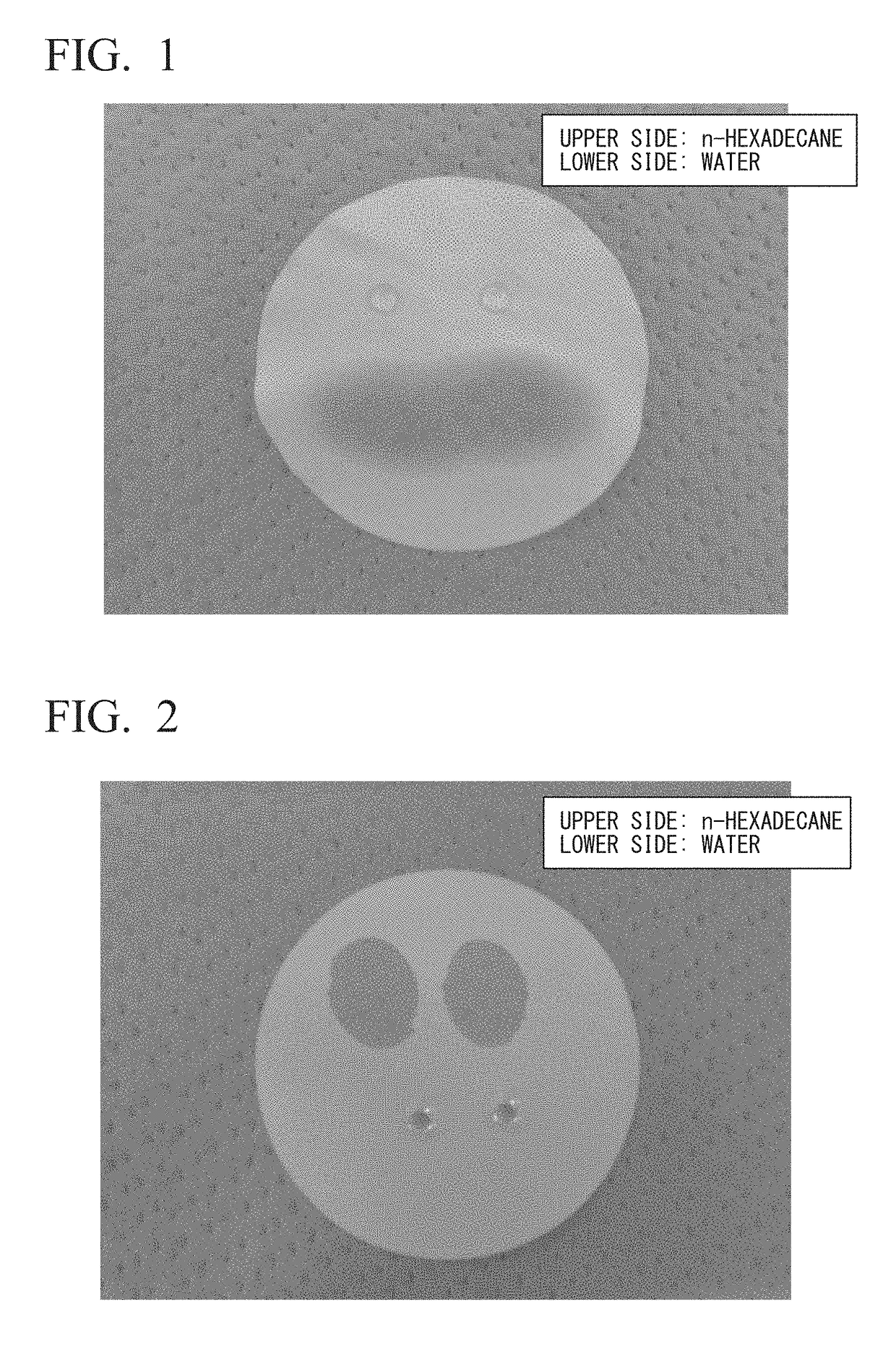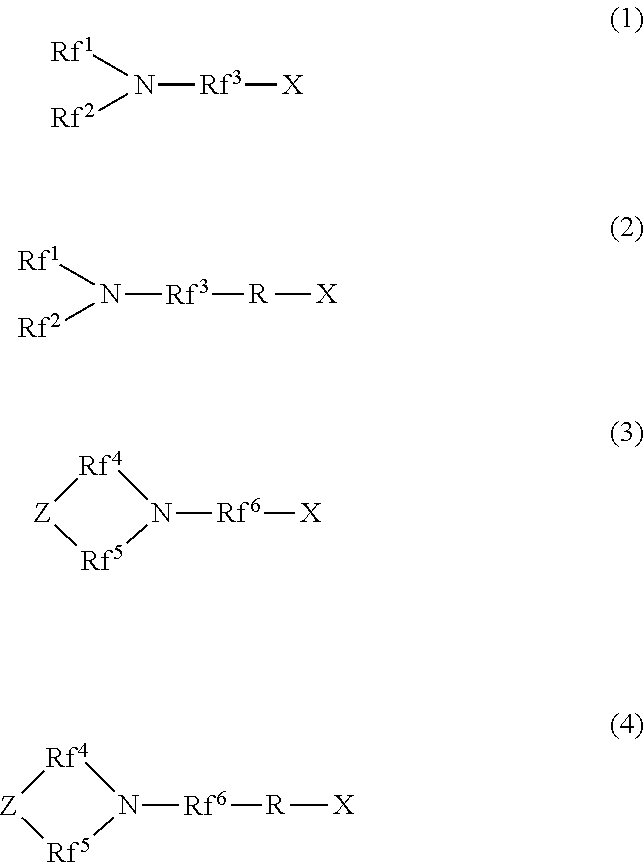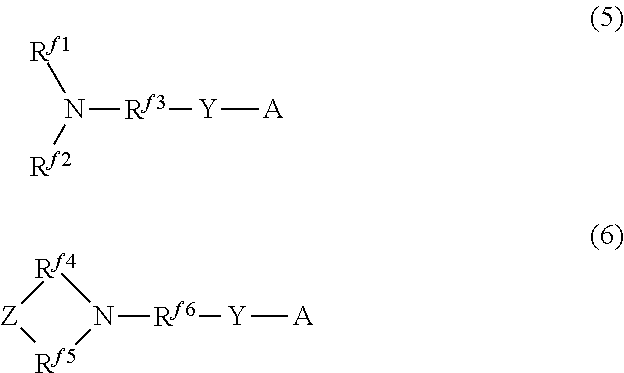Hydrophilic oil repellent and production method of same, surface coating material, coating film, resin composition, oil-water separation filter material, and porous body
a production method and technology of hydrophilic oil, applied in the direction of biocides, other chemical processes, resin compositions, etc., can solve the problems of difficult to remove oil stains adhesion to the surface or wipe off oil stains by washing with water, and achieve excellent hydrophilicity and oil repellency. , the effect of easy formation of a surface coating material
- Summary
- Abstract
- Description
- Claims
- Application Information
AI Technical Summary
Benefits of technology
Problems solved by technology
Method used
Image
Examples
synthesis example 1
Synthesis of perfluoro(3-dibutylaminopropionic acid) calcium
[0172]352 g of a 12.5% (mass percent concentration, and hereinafter, the same is applied) sodium hydroxide aqueous solution was put into a 2 L glass flask, and by adding 837 g of perfluoro(3-dibutylaminopropionic acid) fluoride obtained by electrolytic fluorination of methyl 3-dibutylaminopropionate dropwise thereto, a reaction was performed. After adding dropwise, 500 mL of ethyl acetate was added thereto, and by extraction, perfluoro(3-dibutylaminopropionic acid) sodium was obtained. After the ethyl acetate layer and the water were separated, the ethyl acetate was distilled off using a rotary evaporator, whereby 488 g of perfluoro(3-dibutylaminopropionic acid) sodium was obtained as a pale yellow solid.
[0173]Next, 488 g of perfluoro(3-dibutylaminopropionic acid) sodium and 280 g of 95% sulfuric acid were put into a 1 L glass flask, followed by mixing, and distillation was performed under reduced pressure, whereby 436 g of...
synthesis example 2
Synthesis of perfluoro(3-dibutylaminopropionic acid) potassium
[0175]10.0 g of perfluoro(3-dibutylaminopropionic acid) obtained in the same manner as in Synthesis Example 1 was neutralized with 2.0 g of a 48% potassium hydroxide aqueous solution in water, and water was distilled off, whereby 10.3 g of perfluoro(3-dibutylaminopropionic acid) potassium represented by the following formula (377) was obtained (yield of 97%).
synthesis example 3
Synthesis of perfluoro(3-dibutylaminopropionic acid) ammonium
[0176]10.0 g of perfluoro(3-dibutylaminopropionic acid) obtained in the same manner as in Synthesis Example 1 was neutralized with 1.0 g of 28% ammonia water in water, and water was distilled off, whereby 10.2 g of perfluoro(3-dibutylaminopropionic acid) ammonium represented by the following formula (378) was obtained (yield of 99%).
PUM
| Property | Measurement | Unit |
|---|---|---|
| Mass | aaaaa | aaaaa |
| Ratio | aaaaa | aaaaa |
| Water solubility | aaaaa | aaaaa |
Abstract
Description
Claims
Application Information
 Login to View More
Login to View More - R&D
- Intellectual Property
- Life Sciences
- Materials
- Tech Scout
- Unparalleled Data Quality
- Higher Quality Content
- 60% Fewer Hallucinations
Browse by: Latest US Patents, China's latest patents, Technical Efficacy Thesaurus, Application Domain, Technology Topic, Popular Technical Reports.
© 2025 PatSnap. All rights reserved.Legal|Privacy policy|Modern Slavery Act Transparency Statement|Sitemap|About US| Contact US: help@patsnap.com



